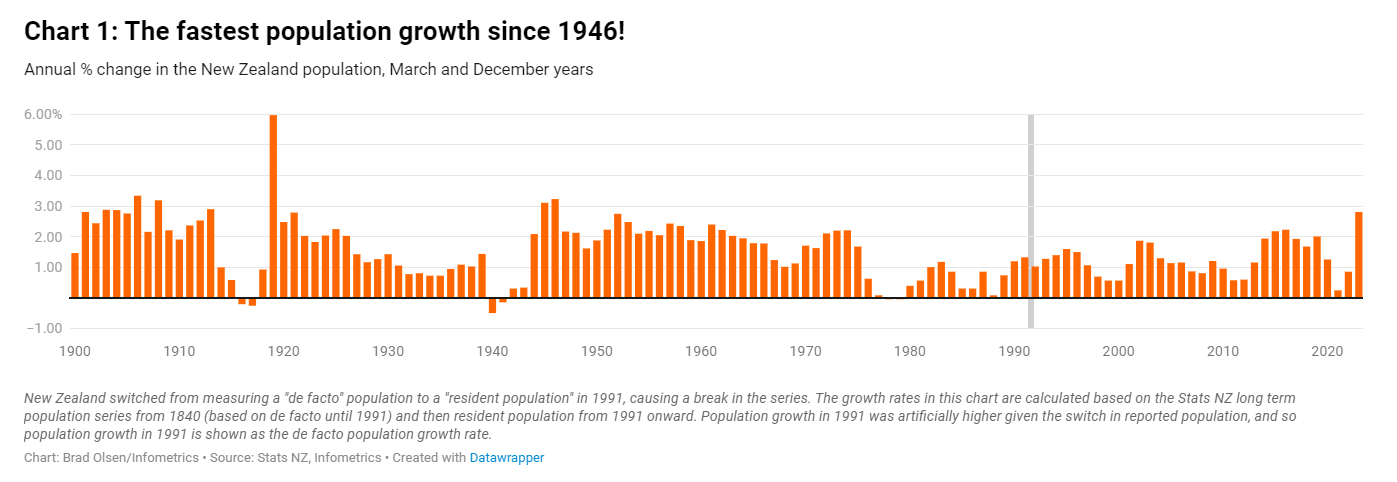This amid surge in migration

New Zealand has experienced a remarkable surge in population growth, marking the fastest rate since the post-World War II era, according to Infometrics.
Brad Olsen (pictured above), CEO and chief economist said the influx of migrants has propelled the national population increase by 145,000, considering births and deaths, effectively adding a population size comparable to Dunedin within the past year.
Historic growth in population
The estimated resident population soared by 2.8% over the 12 months ending in December, surpassing the 2% growth mark for the first time since 2019. This growth rate not only eclipsed the 2.2% increase observed in 2016, when net migration previously peaked but also stands out as a rare occurrence, with only four instances of over 2% growth since the 1970s.
“Last year’s population growth was the fastest growth since 1946, when the population grew 3.2% as Kiwi soldiers returned from the Second World War,” Olsen said.
Similar demographic trends were noted around the World Wars, with population declines during the conflict periods due to reduced visitor numbers, lower birth rates, and higher death rates, followed by rebounds in growth post-war.
Migration trends predicted to taper in 2024
The recent spike in population growth, fueled by unprecedented levels of net migration, has placed considerable pressure on the economy, escalating rents in certain regions and straining infrastructure like hospital services.
With discussions around the sustainability of current migration levels, Immigration Minister Erica Stanford has voiced concerns over the "unsustainable" nature of recent migration trends.
“However, it’s clearly too late to limit the high levels of migration already experienced, and any changes to migration settings might hit just as net migration trends lower,” Olsen said.
“Stats NZ data has shown that monthly arrival numbers have plateaued (on a seasonally adjusted basis) – despite the fact that we are still seeing an additional Taupō District worth of arrivals every second month.”
Analysis up to January indicated a downturn in work visa issuances and a 12% decrease in job advertisements from pre-pandemic levels, suggesting a potential slow-down in migration as the year progresses, the Infometrics economist said.Top of Form
Read the Infometrics article here.
Get the hottest and freshest mortgage news delivered right into your inbox. Subscribe now to our FREE daily newsletter.



